Cave diving is an extreme type of diving where divers brave the claustrophobic, pitch-black cave tunnels with specialized scuba gear. The sport of scuba diving already comes with its own fair share of risks, and cave diving takes that to the next level.
Under normal circumstances, scuba divers already have to deal with the effects of breathing compressed air and risk of running out of air. With cave diving, divers additionally need to contend with poor visibility, not knowing where the entrances/exits are, no easy access to the surface, potentially getting entangled, and much more dangers.
As you can tell, cave diving is NOT for beginners. It’s technical diving at its most technical. Out of all the different types of diving you can do, cave diving is arguably one of the most dangerous. According to this research article from the Cave Divers Association of Australia, there are approximately 10 cave diver fatalities in America each year. The most common mistakes which lead to death were: not diving with a continuous guideline to the surface, not following the rule of thirds, and diving too deep for the type of breathing gas used.
If you’ve read this far and are still interested in cave diving, you are truly an adventurous diver. Cave diving exists for a reason – because it’s exhilarating and exciting, and the people who get a kick out of it really enjoy it. So if you’re still reading and still want to learn more, let’s discuss how you can get started with cave diving.
What is cave diving?
So what exactly are you getting yourself into? Recently minted Open Water divers should not even consider cave diving. It is a more intense and dangerous type of diving within the sport of scuba diving. Like ice diving, cave diving involves diving in an overhead environment except you don’t have a team of people above you looking out for your safety.
With cave diving, you have zero vertical access to open air or direct light. In other words, there is no emergency exit; if your scuba cylinder, dive light or other equipment suddenly malfunctions, you could find yourself miles away from the nearest exit in complete darkness and poor water visibility. For this reason, backups of the most essential equipment are needed.
However, it’s not all doom and gloom. The reason why cave diving is so exciting is because there are lots of discoveries to be made. After entering a sinkhole or cenote, you could come across ancient rock formations that were lost for hundreds of years, and you are exposing them to the light of day for the first time ever. Each time you cave dive, there is a possibility you are going to an area so exclusive, you may literally be the first and only person to ever be in that area.
The exclusivity of cave diving is another reason why it’s so dangerous. Once again, if something were to happen to you, no one is going to come for you because they’ll probably never find you. It’s no surprise that cave diving has a reputation for being a daunting and dangerous sport. However, with the proper training, experience, and gear, cave diving could be one of the most rewarding experiences you’ll have.
If you’re ready to embrace the dark, claustrophobic depths of cavern diving and want to go on cave diving expeditions, then you’ll need to be Cavern Diver certified.
Cave diving certifications
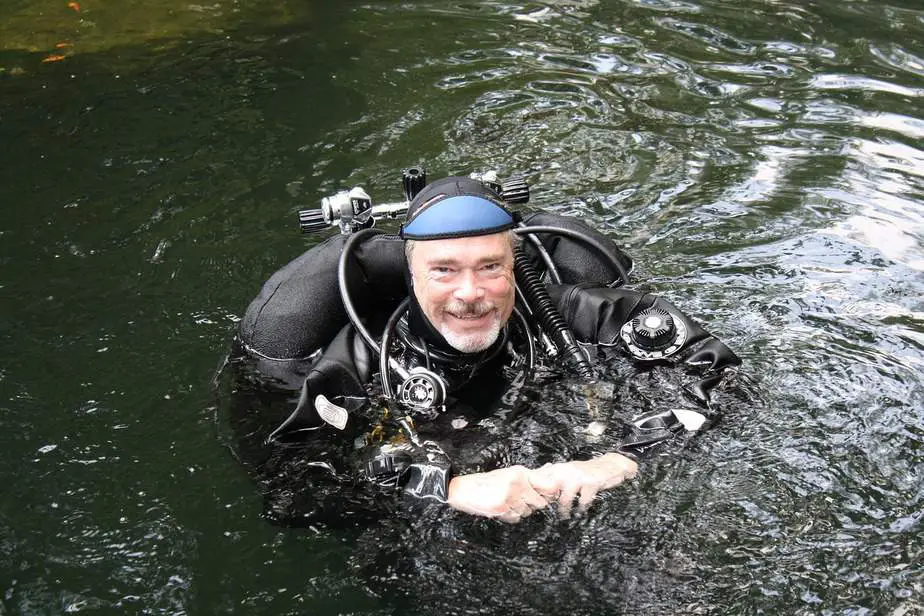
Cave diving is a great opportunity to also dive in freshwater springs. However, you will need to first get cave diving certified to be able to enter these dark, mysterious underwater caves. Before we list the various cave diving certifications you can get, we need to first clarify that cave diving and cavern diving are two distinct sports that people often confuse with each other.
Cavern diving is when you dive only near the entrance of a cave – close enough that you can still see direct light entering. This is much safer because you are close enough to the entrance that you can quickly exit if something goes wrong. Cave diving is when you dive much deeper into the cave until most or all sources of light disappear and the water clarity starts to decrease.
Now that you know the differences between these two sports, let’s examine how you can progress through the ranks to become a full-fledged cave diver.
Cavern Diver Course
If you just want to dip your toes into the waters of cave diving, so to speak, then you can take a Cavern Diver course to start out. In the past, the Cavern Diver course was a mandatory prerequisite that all divers had to take as part of the certification process to become a full cave diver. Nowadays it’s optional, however there is still some benefit to taking it.
The Cavern Diver course teaches you the fundamentals of cave diving and the skills you’ll learn is useful for future cave diving courses. This course lasts 2-3 days and requires just the standard scuba diving gear such as an exposure suit, diving mask, fins, cylinder, dive lights, etc.
The course will cover topics like gas management, how to use a dive computer for cavern diving, what to do in case of an emergency, how to follow the guideline with limited to no visibility, how to deal with any medical emergencies, and so on. To complete this course, you will need to perform 4 cavern dives split into 2 or more cavern zones and demonstrate you understand the lessons taught in the course.
Apprentice Cave Diver Course
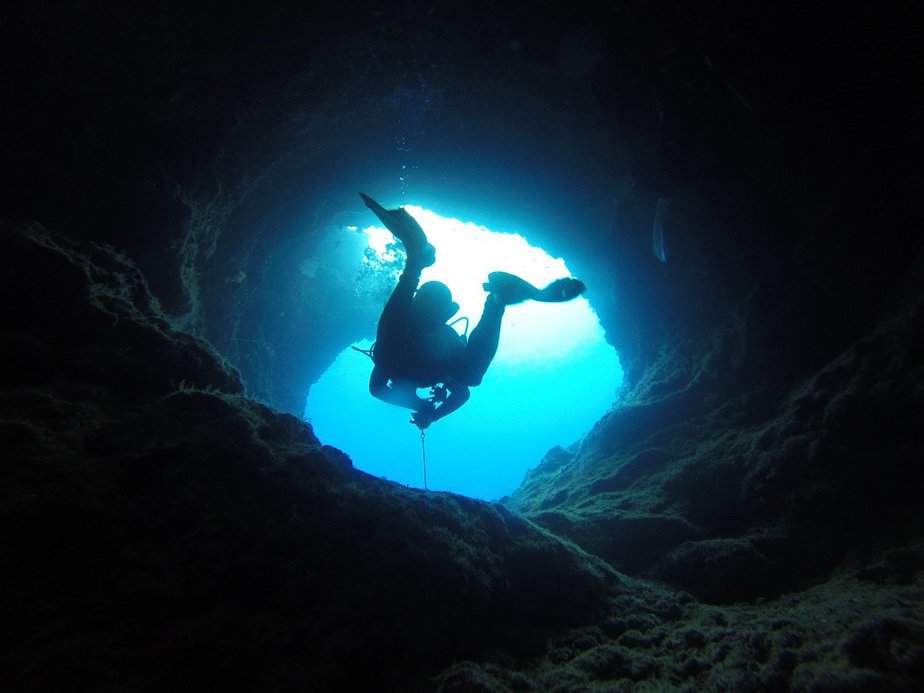
You may optionally complete the Cavern Diver course before starting the Apprentice Cave Diver course, or you can start right from here. In the past, divers needed to complete 4 courses to become a “full” cave diver. The courses were: Cavern Diver > Basic Cave Diver > Apprentice Cave Diver > Cave Diver. Today, the Cavern Diver course is no longer a requirement, and the old Basic Cave Diver and Apprentice Cave Diver courses are now merged into one.
Today, the Apprentice Cave Diver course is more comprehensive and demanding than the old version. You will learn about such topics as critical emergency skills, safe cave diving practices, awareness of the environment, dive planning, limited penetration of the main line, and a chance to gain some experience practicing fundamental cave diving techniques.
Cave Diver Course
After you complete the Apprentice Cave Diver course, you can finally move on to the “full” cave diver course that you’ve been waiting for. This course tests your knowledge and proficiency of what you’ve learned before and builds upon it.
This course also focuses on cave navigation with jumps and gaps, the theory behind complex circuits and traverses (for caves that require a halfway or point of no return), and how students can take their open-water decompression training and apply it to cave diving.
Prerequisites
In order to even be eligible for enrollment into any cave or cavern diving course, you must first meet certain requirements. They are:
- Be 18 years of age or older.
- Possess the Advanced Open Water Diver and Nitrox Diver certifications, or equivalent, from a recognized scuba training agency.
- Logged a minimum of 50 dives.
- Possess proof of certification in sidemount or backmounted doubles, or proof of some cave/cavern diving training from a recognized scuba training agency.
- Prior to or concurrently with the “full” Cave Diver course, students must acquire or possess certification in decompression procedures involving the use of enriched air nitrox for decompression.
Even if a student meets these requirements, instructors will evaluate students on whether they demonstrate adequate skills in buoyancy, trim, and propulsion. If they do not, students may require additional training before they can be cave diver certified.
How long will it take to get certified?
Overall, the time it takes to take and pass the Apprentice and full Cave Diver courses is eight days, typically broken down into two segments of at least four days each. During this time, you will perform at least 16 cave dives, spending a combined total of at least 600 minutes underwater.
If you decide to take the Cavern Diver course as a taster course, then expect to spend even more time. By doing so, however, you will be much more prepared than the average student. The Apprentice Cave Diver course in particular is quite a shock to many students because of how demanding it is for someone with no prior cave diving experience.
Dangers of cave diving
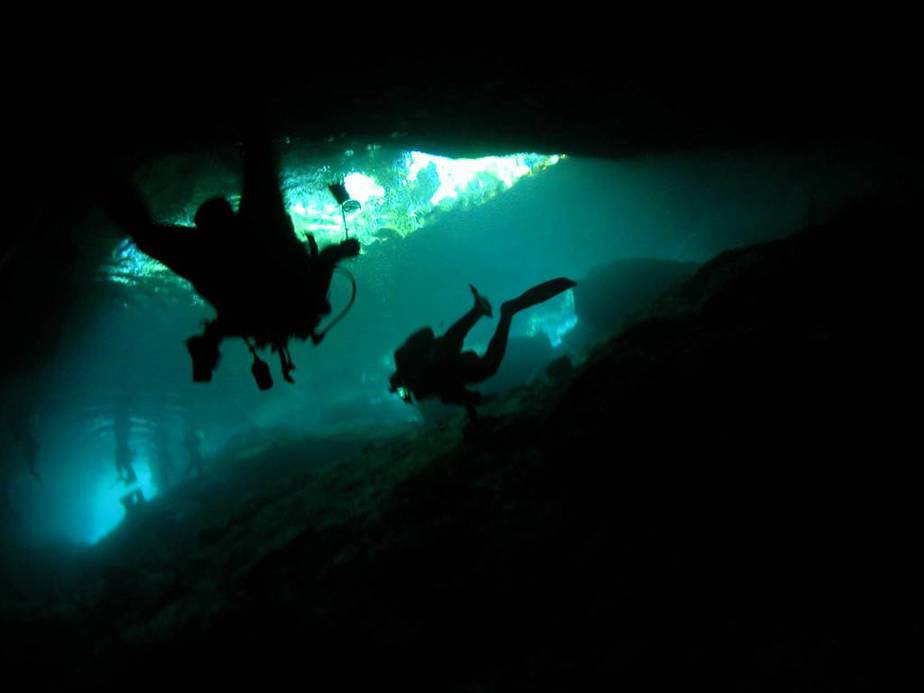
After you have received the proper cave diving training and follow the safety procedures to the letter, cave diving will prove to be an extremely rewarding activity that is still challenging and dangerous. Several risks are inherent to cave diving that can cause you harm if you aren’t careful or experienced enough. Let’s go over some of these risks.
Running out of breathing gas
Running low on air is an issue for all divers, but arguably it affects cave divers the most. It’s not easy to surface when you are diving in an overhead environment in complete darkness. Due to an accident or an unforeseen circumstance, divers may find themselves running low on air and on a race against time to navigate out of the cave and to the surface.
Furthermore, the air consumption rate varies from person to person. Air consumption can rapidly increase if one suddenly has to exert themselves or if they are suddenly stressed out. Anything that can increase one’s breathing rate or heart rate will cause them to inhale more breathing gas faster and decrease their bottom time.
One important rule that cave divers follow is the rule of thirds. The rule of thirds is when you ration your total breathing gas into thirds, each third to be used for a specific purpose. The first third of your breathing gas is reserved for descending and exploring at depth. The second third is reserved for the way back, the ascent. The final third, ideally, should not be used at all. It is reserved just in case something goes wrong and you spend more time underwater than you originally anticipated.
Does the rule of thirds sound wasteful? Leaving an entire third of gas entirely unused “just in case”? Ascending after only a third of the breathing gas is consumed? If something does go wrong, you’ll be glad you were so conservative with how you rationed your breathing gas.
Turbid conditions
Another major risk of cave diving is the lack of natural light and poor water visibility. There will be times when you are caught in a silt-out and your visibility will be zero. There might also be times when your dive light malfunctions. If you think it’s bad getting stuck underwater with limited air, imagine going through all of that in total darkness.
Physical stressors
True cave diving will take divers deep underwater where the pressure is intense. Furthermore, cave diving requires divers to be well-equipped to handle the pressure and deal with any equipment malfunctions. Unsurprisingly, divers end up being quite bulky and weighed down due to the sheer amount of dive equipment they are bringing.
Navigating while carrying so much equipment subjects the diver to serious physical stressors that can lead to exhaustion and increased air consumption. Additionally, the water is cold, some of the tunnels may elicit feelings of claustrophobia and suffocation, and divers often need to swim very far in order to get anywhere in the expansive cave system.
Tips for how to cave dive safely

Do the proper training
In order to enroll in the Cave Diver course, you’ll need to undergo the prerequisite training. You’ll need at least an Advanced Open Water Diver or Rescue Diver certification, at least 50 logged dives, and ideally some experience diving with a twin-tank system or sidemount. To dive sidemount, you’ll need to be sidemount certified.
Plus, since most cave dives take place in cold water, can reach several dozen meters underwater, and have limited natural light, you may also need a drysuit diver certification, deep diver certification, enriched air nitrox diver certification, as well as a night diver certification. That’s a lot of training, but it will equip you with the right skills and knowledge to tackle arguably one of the most dangerous types of diving.
One of the biggest risks of cave diving are narrow passages. With all of your gear on and carrying backups, you’re going to be bulky, and avoiding entanglement is an art. You need to be comfortable with finning techniques, particularly frog kicking, to generate enough propulsion. You’ll also need to master your buoyancy control in order to have more control over your positioning.
Have a guideline
One of the major risks when exploring a vast cave system is poor visibility and getting lost. Often, poor visibility results in getting lost, so they are basically the same thing. While some caves have clear water with great visibility, that’s not always the case. The visibility can also rapidly change as you travel through each section of the cave.
Thus, the water may be crystal clear to start, but as you swim and disturb the silt with your fins, you could very quickly end up in a zero-visibility situation. For this reason, guidelines are essential for orienting yourself and leading you in the right direction towards safety. Always use a reel or guideline when cave diving. Clip arrows on the line so you know which way leads out of the cave.
Reserve enough air
Another major risk of cave diving is running out of air. For regular scuba diving, you can easily share your dive buddy’s air supply as you do a controlled emergency ascent. When diving in an overhead environment, it’s not so simple. Without a guideline, it’s not always clear which direction you should go. Furthermore, some passages are narrow, and two bulky cave divers might not be able to easily fit through it.
Another issue with an out-of-air situation while cave diving is that most cave dives are decompression dives. This means you have spent too much time breathing compressed air that excess nitrogen has accumulated in your body. Even after you find the entrance of the cave, it doesn’t mean you can beeline it to the surface. Your body needs time to off-gas through various decompression stops, otherwise you risk suffering decompression sickness.
Therefore, monitoring your air supply is even more important than usual. You should check your SPG frequently, and adhere to the rule of thirds to ensure you have sufficient breathing gas for the return trip. It’s better to err on the side of being too conservative so that enough air is left in reserve rather than too little.
You can never have enough lights
Most cave diving is done in pitch black caves. Without bringing your own light source, you will be surrounded by perpetual darkness. That’s why you have to bring lots of dive lights with you! At a minimum, you need one primary dive light and two backup dive lights. The cave diving motto is: “Three lights is two, two lights are one, and one light is none.”
Your primary dive light should be an LED light with at least 1,000 lumens, more is even better. When you are caught in a silt-out, only a powerful light can penetrate through the murky water. If your primary light goes out and you have no backup light, then you’re in serious trouble. Each dive light you bring must be able to burn for the entire duration of the dive. You can switch the light to a lower brightness setting to conserve battery life.
Don’t go too far or too deep
Cave divers need to be careful not to be too eager or to have an ego. Many cave diving fatalities resulted from people diving too deep or too far while trying to push the limits of their diving skill, or to feed their ego. This is when things can go catastrophically wrong.
Another scuba saying is: “Plan your dive, dive your plan.” This means you should already know exactly how deep and far your dive will be, and then you must execute it exactly as you planned. Do not deviate from the plan, because it puts you at risk of more difficulties. If something goes wrong, you won’t be prepared for it and might even panic.
Therefore, you should always dive within your limits, specifically within your plan. You can push your limits as you gain more experience and make more complicated plans. Don’t rush things.
How much do cave divers make?
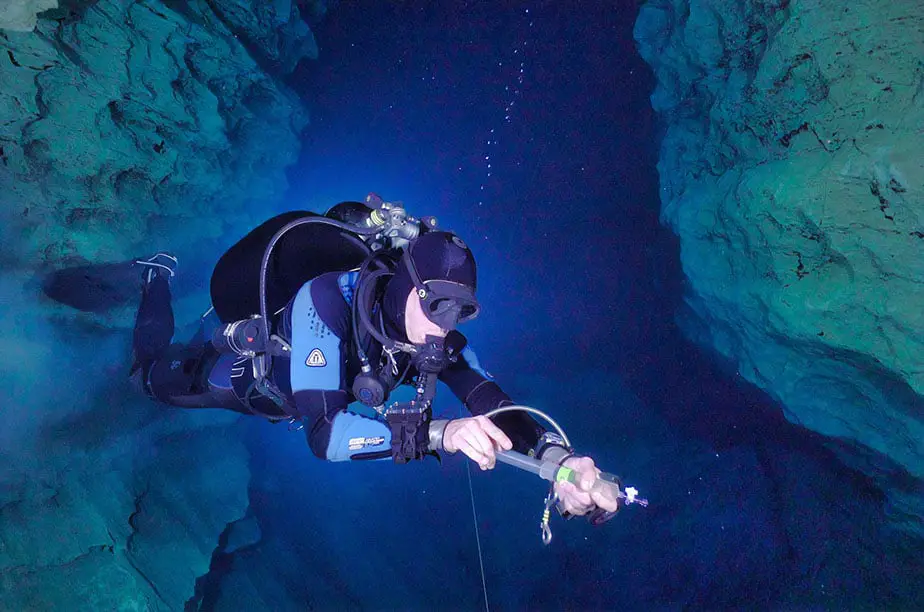
Just like other occupations, how much money you can earn as a cave diver depends on various factors such as location, experience, personal aptitude, whether the job is commission-based or fixed salary, the specific company you work for, and so on. As a ballpark figure, cave divers can earn between $40,000 to $60,000 starting out, and as high as $100,000 to $150,000 with years of experience.
Where can I go cave diving?
Once you have acquired your cave diving certification, it’s time to put it to good use. There are numerous cave diving spots all across the globe so you can practice or teach the sport. Below are some cave diving spots that will truly test your limits.
Orda Cave – Perm Region, Russia
Orda cave is the longest cave in Russia and is recognized as the longest gypsum in the whole world that stretches over 5.1 km (3.2 mi). Inside, you’ll find some beautiful scenery, most of which remains undiscovered to this day.
Since the cave is mineral-rich, the cave naturally filters the water and makes it unusually clear. This is a massive benefit because visibility is often an issue for cave diving, but in Orda Cave, divers have a visibility of over 46 m (150 ft) which increases safety and makes it an ideal location for underwater photography.
Nereo Cave – Alghero, Sardinia
Nereo Cave is the Mediterranean Sea’s largest underwater cave with many arches and tunnels. With 10 entrances, there are many ways for divers to make their way from 0 to 35 m (115 ft) using the tunnels and various air chambers. The walls are covered with yellow leptopsammia and red coral, making it one of the most attractive features for divers that come from all over the world.
Indian Springs – Florida, USA
Situated on a private property in Florida, the Indian Springs cave features a circular spring pool that is 56 m (185 ft) in diameter, with depths ranging from 10-20 m (30-60 ft). The spring water is clear, albeit with a greenish tint. This is because green algae float in clumps around the spring pool and run. Indian Springs is one of the best cave sites in North America with numerous points of interest inside the cave.
What cave diving gear do I need?
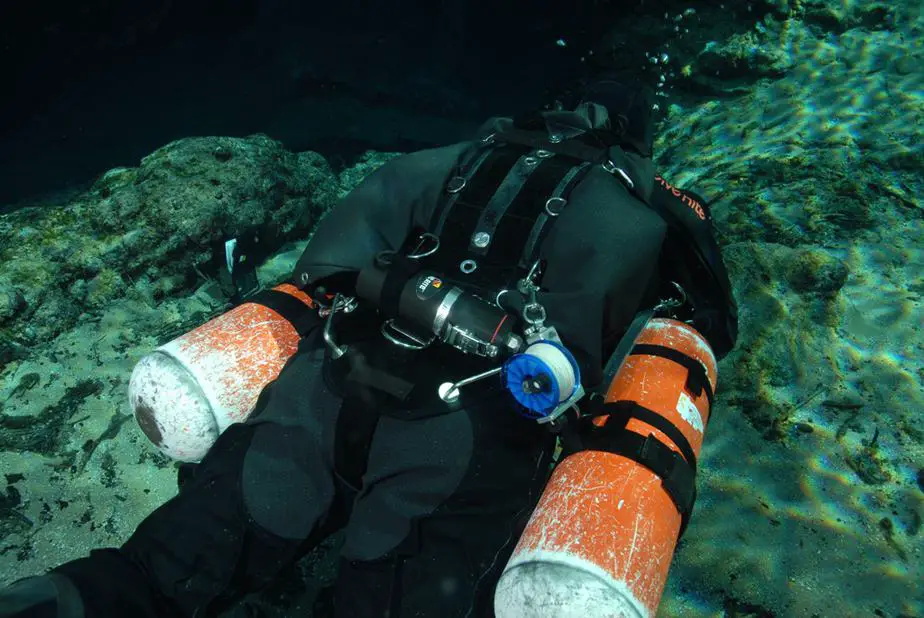
With cave diving, the gear required is all the more important because you need to rely on them to last for the entire duration of the dive. When diving in an overhead environment, there are limited to no opportunities to surface in the event of an emergency. If something breaks down during a dive, you need to be able to fix it on your own or use a spare.
Every essential piece of cave diving equipment should have a backup. In other words, cave divers are carrying nearly twice the amount of gear compared to other types of divers. Encumbered by all of this weight and bulk, cave divers must somehow streamline their profile as much as they can so that they can fit through narrow tunnels while exploring a cave system.
- Masks: For cave diving, your mask should be streamlined, low-volume, with a wide field of vision. Both cave and tech divers prefer masks with black silicone skirts since they block and absorb the most light and prevent your pupils from dilating as much. It’s a good idea to bring a compact backup mask in your BCD pocket.
- Fins: You need a flat-bladed paddle fin in order to generate powerful propulsion. Do NOT get split fins or hinged fins; these are more likely to get tangled up. Flat-bladed fins are easier to frog-kick with and are usable with other specialized propulsion techniques. If your fins don’t have spring heel straps, it’s time to get some.
- Exposure suit: Cave diving is a type of cold water diving. Thus, in order to keep warm while cave diving, you will need either a 7 mm full-length wetsuit and dive hood, or a full drysuit. Most cave divers dive dry. You can wear dive gloves, however they must have their fingertips cut off so you can better feel the guideline and maintain dexterity. Thigh pockets are also mandatory.
- Dive computer and gauges: For optimal results, you want two methods of monitoring depth and time. That means you are either using two dive computers, or a single dive computer plus a depth gauge and timer. If you’re doing a decompression dive, your dive computer must be capable of tracking multiple gas mixtures and calculating deco stops. If you aren’t using a dive computer, then you’ll need a dive table with deco stop times.
- BCD and tank setup: You can choose between diving backmount or sidemount. Sidemounting divers need at least two 13 L/85 cf or larger cylinders with appropriate sidemount harness and attachment hardware. Backmount divers need two 13 L/85 cf or larger manifolded doubles with dual-orifice, isolation manifold. The setup should be clean, so no additional D-rings, bungees, or hose clamps. Air cells must provide adequate lift to carry all of your additional gear.
- Regulators: You need to use a cold water regulator, because standard ones may freeze and freeflow. Your primary cylinders require two separate balanced-first-stage regulators (two first stages with one second stage each). At least one second stage must have a long hose for gas sharing.
- Stage and deco bottles: You need at least one 11 L/80 cf stage bottle.
- Primary and backup dive lights: Ideally, your primary dive light should be an LED 1000+ lumen light (2,000 or more is even better). It should NOT have a pistol grip; opt for a hand mount or Goodman-style mount so you can keep your hands free. You’ll also need two LED backup lights. Avoid cheap lights with plastic housings. Even your backup lights should be designed specifically for technical or cave diving.
- Reels and spools: You need at least two safety reels or spools with a combined total of at least 45 m (150 ft) of line between them. Each team should have one primary reel with sufficient line to reach all the way from the cave entrance to the beginning of the furthest permanent line (75 m / 250 ft is sufficient).
- Cutting tools: Most dive knives are useless when dealing with a cave entanglement. They are too bulky, big, often are the cause of the entanglement, and don’t hold an edge for long. A better cutting tool would be a parachute line cutter or even trauma shears. You’ll need two line cutters.
- Wet notes: Dive slates are good for tech diving, not as much for cave diving. Wet notes are a better option, so keep them in your thigh pocket.
- SMB or lift bag: This is basic, essential stuff for all tech diving.
Those who are brave enough to descend to the dark depths of caves, with specialized training and sufficient preparation, can explore a world that no other diver has. Cave diving has its fair share of risks, but with great risk comes great reward, and some caves are so beautiful it’s like nowhere else on Earth.


